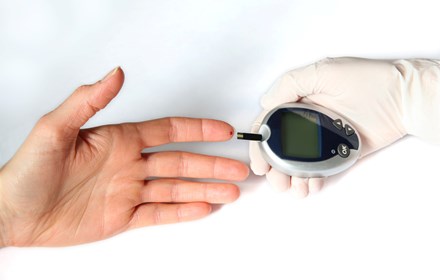
Preparing for early detection and treatment of type 1 diabetes
Healthcare professionals discuss key areas in screening for new cases of type 1 diabetes.
Looking at what is being done to screen new cases of type 1 diabetes, especially in younger people, and what support is available to families in supporting management of a new diagnosis.
Claire Levy, PR and communications at DRWF, reported from the recent Diabetes UK Professional Conference held recently at the SEC in Glasgow.
This session was chaired by previously funded DRWF researchers Professor Kathleen Gillespie, Professor of Molecular Medicine, University of Bristol and Professor Susan Wong CBE, Professor of Diabetes and Metabolism and Honorary Consultant Physician in Diabetes, Cardiff University.
Professor Wong was recently awarded a Commander of the British Empire (CBE) for her outstanding services to diabetes and metabolism.
A session on preparing for early detection and treatment of type 1 diabetes featured presentations from leading healthcare professionals in this field. Here we report on an update on screening for type 1 diabetes, with a focus on young people.

DRWF-funded researchers Professor Kathleen Gillespie and Professor Susan Wong CBE, who chaired the session, with Claire Levy of DRWF
Professor Parth Narendran, Professor of Diabetes Medicine at the University of Birmingham, provided an update on screening for type 1 diabetes.
Professor Narendran: “Type 1 diabetes, an autoimmune condition characterised by the presence of one or more autoantibodies, you will recognise these autoantibodies to specific proteins within the beta cell. Generally, we try to test all of these in our clinical patients.
“We do that to differentiate between type 1 and type 2 diabetes. What we have known over the last at least 20 years is that these antibodies predate and predict the onset of the need for insulin.
“Work led by Annette Ziegler (Technical School of Munich School of Medicine and Health) and many other groups, shows a progression to insulin therapy in people who are two or more antibody positive over a 15-to-20-year period. Over time almost all of them progress to insulin. This has led to the understanding that if you have two or more antibodies, then you are essentially defined as having type 1 diabetes.
“We have genetic risk immune activation and then a progression through to establishing type 1 diabetes.
“We have the tools now to predict who is going to get type 1 diabetes, need insulin, and also to educate and inform them. We are recognising someone with type 1 diabetes even before they need insulin. This stage is called presymptomatic type 1 diabetes and that is called asymptomatic type 1 diabetes.
“There are clear advantages to identifying people early so they get more frequent check-ups and time to prepare. You can start treatment earlier. Studies suggest that glucose control for at least the first five years is better in people who are screen detected. You can prevent diabetes ketoacidosis (DKA).
“Currently, around 20 to 25% of children are diagnosed in DKA, and it is up to 50% in cities like Birmingham and in deprived and ethnic minority populations. You can really bring that down to 5% or lower if you are in a screening programme, with access to promising new therapies. Most exciting of this is to Teplizumab an Anti-CD3 agent, which is currently undergoing review.
“There are lots of lots of screening programmes now coming up in the UK, we have ELSA (EarLy Surveillance for Autoimmune diabetes – screening young people screening between the ages of three and 13) and a very large European- funded programme going across a number of countries, establishing screening across Europe, a couple of programmes in the US, Middle East, Australia and all of these are largely antibody-based screening.
“Australia has a genetic exploring, a genetic pre-screen first to identify people who might be at risk and then come on to diagnose with antibodies and as well.
“Italy has shown the way it is the first and only country where the general population is screened for type 1 diabetes and coeliac disease. They started this in 2024, gradually developing this, slowly starting in a small part of the country and moving forward. They are well in the lead here.
“The drug led by the chair of this session, Kathleen Gillespie, is looking at 18 to 70 and looking at the natural history of type 1 diabetes in adults.
“The study results from ELSA, which started here on World Diabetes Day 2022, aims to determine the best approach to recruiting into a surveillance programme for pre-symptomatic type 1 diabetes, through examining the feasibility of a variety of approaches to access and include participants from diverse ethnicities and levels of deprivation, and also to understand the perceptions and acceptability of families in the UK, to be involved in early detection programme, and to establish how they want to be informed and participate.
“In terms of recruitment, we have explored lots of different routes of recruitment.
“These include testing through home, general practices and community settings. Can we piggyback on the MMR (measles mumps and rubella) or preschool vaccine programme to be tested through schools and through pharmacies? We are also reaching out to the less privileged ethnic minority populations, an important part of the study because presenting in DKA and some of the diabetes outcomes are worse in these populations.
“At a community clinic in the West Midlands, and a number of others in London and in Scotland, the screening test initially is a finger prick test, which can be done at home, and you dab it onto a filter paper air, dry it and post it back. A very stable test if it is positive and only a minority will be positive. Then they are called to a confirmatory venous test, and for that they need to travel. We have around 20 centres dotted around all four nations to try and get these confirmatory venous tests and then subsequently an oral glucose tolerance test.
“Initially people are consented to have the dried blood spot test. Many of these will be negative. If it is positive, the GP is informed.
“The ELSA programme started on World Diabetes Day, November 2022 and we are funded until August of this year and looking for funding to continue.
“In England we recruited 90% of the participants; Wales 5.8% of the participants; and Northern Ireland recruited 1.5% of the ELSA recruits.
“The median age has been eight, and we have recruited throughout the range from three to 13.
“Of these 52% are male. Generally, families would consent more than one child being tested. The families of the recruits have a first degree relative with type 1 diabetes.
“Looking at recruitment by ethnicity in terms of compared to white and non-white, we are broadly matching the paediatric census data. But within populations we have under recruitment and we fail a little bit on the Black and the South Asian populations. We have done better than the on the paediatric census on the multiple ethnic groups and other ethnic groups. A little bit of work to be done there and also work to be done on the deprivation level.
“In terms of screening uptake, if there was diabetes experience in the family, they are more likely to come forward for screening. And if there was no diabetes family, they did not see the relevance of it for screening test acceptability. If there was experience in the family of blood testing, i.e. there was someone with diabetes in the family, it was helpful, and most people preferred home testing. It was the simplest way to do this, and it was easier to perform on young children in terms of screening anxiety.
“Overall, they trusted the study they recommended to others and in those who are antibody negative, there was some interest in repeating the test and in monitoring and then looking at the impact. If you look at the effective attitude for those who screened negative, there was relief, reassurance. There was no lasting impact.
“If it was positive, they were grateful to know their child's risk and without regret of taking part. We looked at anxiety even after education and there was persisting anxiety. That is something we need to think about how we address and support these families in terms of understanding of results. They are more likely to assume a screen negative if there is no risk and there is good comprehension following education if there is a family history of type 1 diabetes.”
Read our other reports:
Delaying the need for insulin in people with pre-type 1 diabetes
I would like to make a regular donation of
I would like to make a single donation of
There are lots of ways to raise money to support
people living with all forms of diabetes.
Bake, Swim, Cycle, Fly ... Do It For DRWF!
Fundraise with us
Recent News


